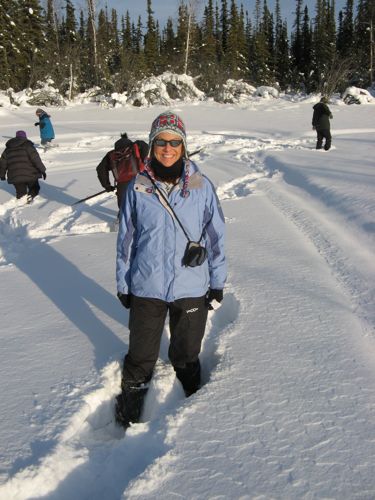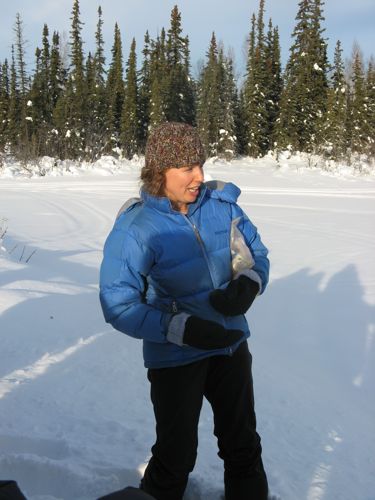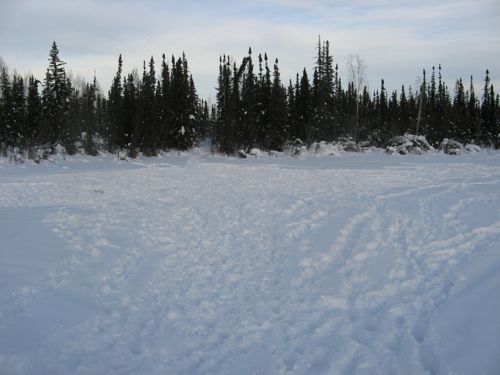Thermokarst Lakes
Thermokarst is a pitted land surface that occurs in Arctic and subarctic regions as permafrost thaws. PermafrostPermanently frozen ground. is more or less permanently frozen ground that is often found in arctic and subarctic regions. The lakes form when meltwater accumulates in the depression in the ground. Dr. Katey Walter Anthony from UAF is studying the lakes and how methane CH4 and carbon dioxide CO2 and is released into the atmosphere from these lakes. Both of these are greenhouse gases.

Dr. Anthony shared with us the Russian view of thermokarst lakes. The term from Russian translates into lakes that are eating the ground. It provides a nice environment for decay of plants and animals. As the remains decay, methane is created which eventually is "burped" out of the lake. When the lake freezes, you can see these bubbles of methane that are trapped in the ice.

A part of Dr. Anthony's research is understanding where these lakes are in the Arctic and the quantity of methane that may be released from these lakes. She has found different types of thermokarst lakes. The Yedoma lakes are the highest source of methane and 6% of pan arctic lakes are this type. When radiocarbon dating is done on the carbon in the methane molecule CH4 the carbon dated back to the Pleistocene epoch. The Pleistocene epoch was between 2 million and 11,500 years ago.

A qualitative way of determining how much of that bubble in the ice is methane and how much of it is nitrogen is to set it on fire. Methane burns and nitrogen does not. Today we went looking for methane bubbles in a nearby lake. Unfortunately, we did not have GPSA Global Positioning System (GPS) is a satellite-based navigation system used to track the location or position of objects on the Earth’s surface. coordinates of the hotspots on this particular lake. Our job was to shuffle through knee-deep snow on the lake and move snow around with our feet while we looked for willow branches that were near these hotspots. After 1 hour and poking a couple of dry holes we found no hotspots.
Here is a video of what we might have found with a lot less snow covering the lake.
Hunting for Methane with Katey Walter Anthony
(http://)


Comments